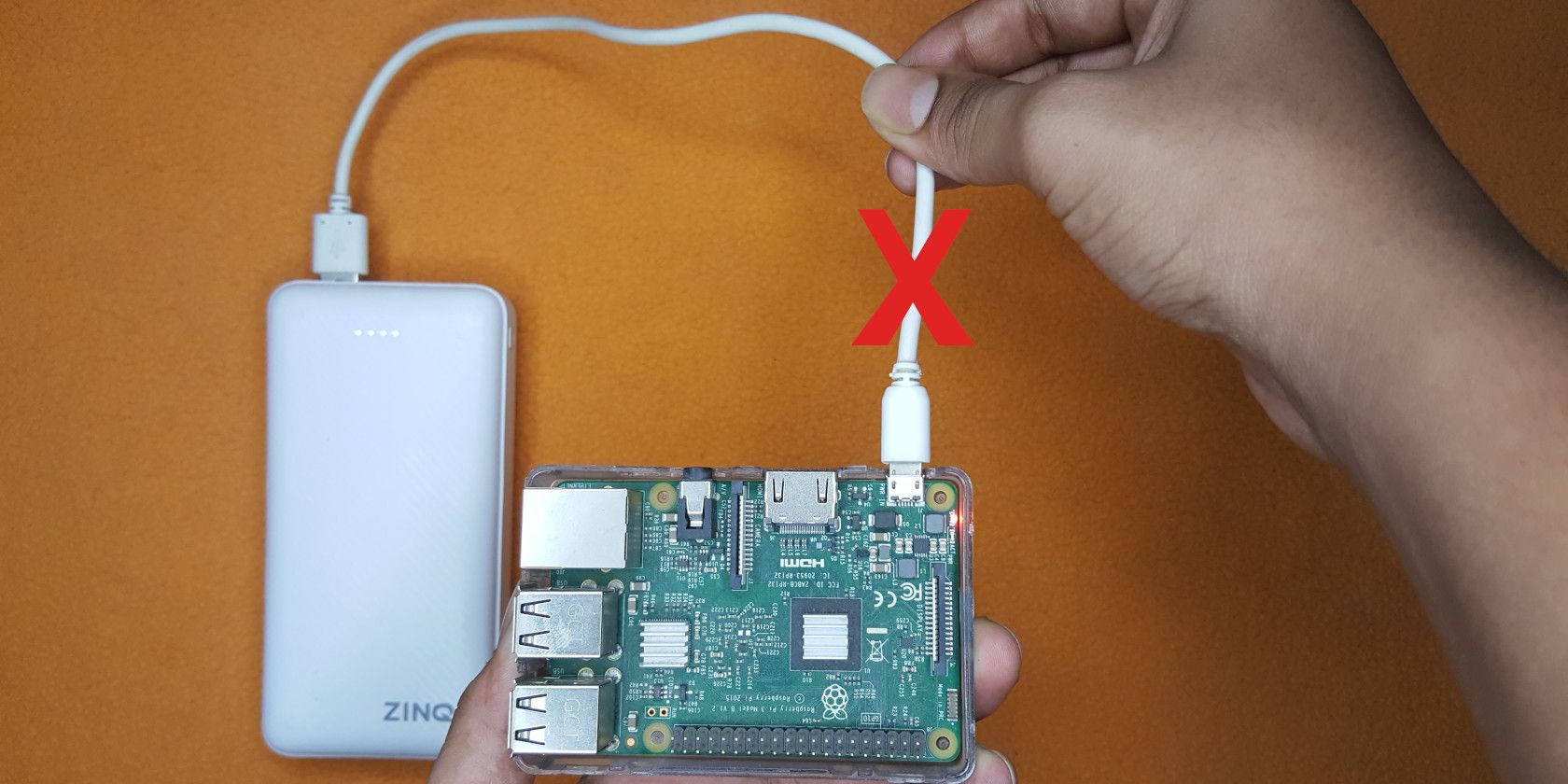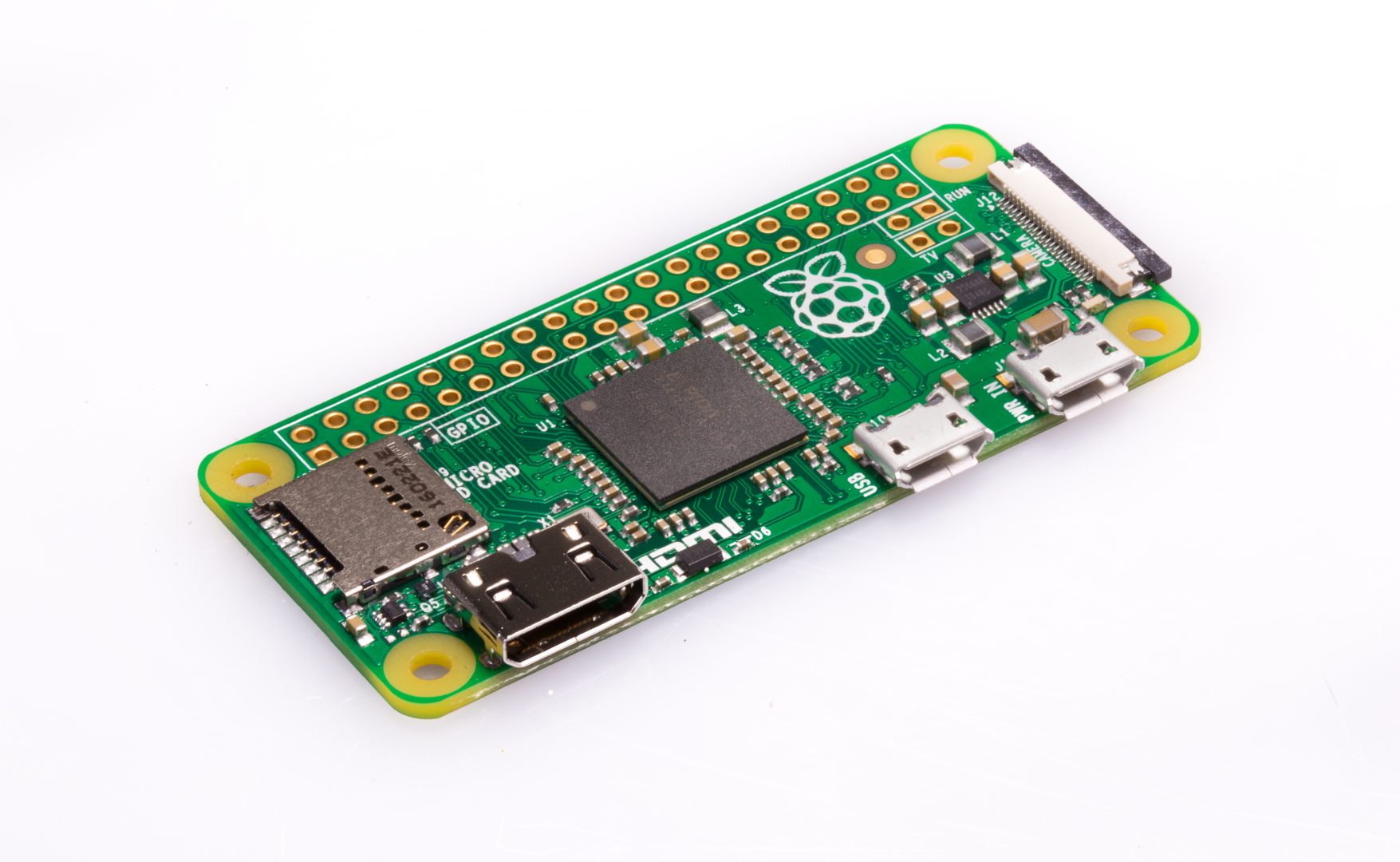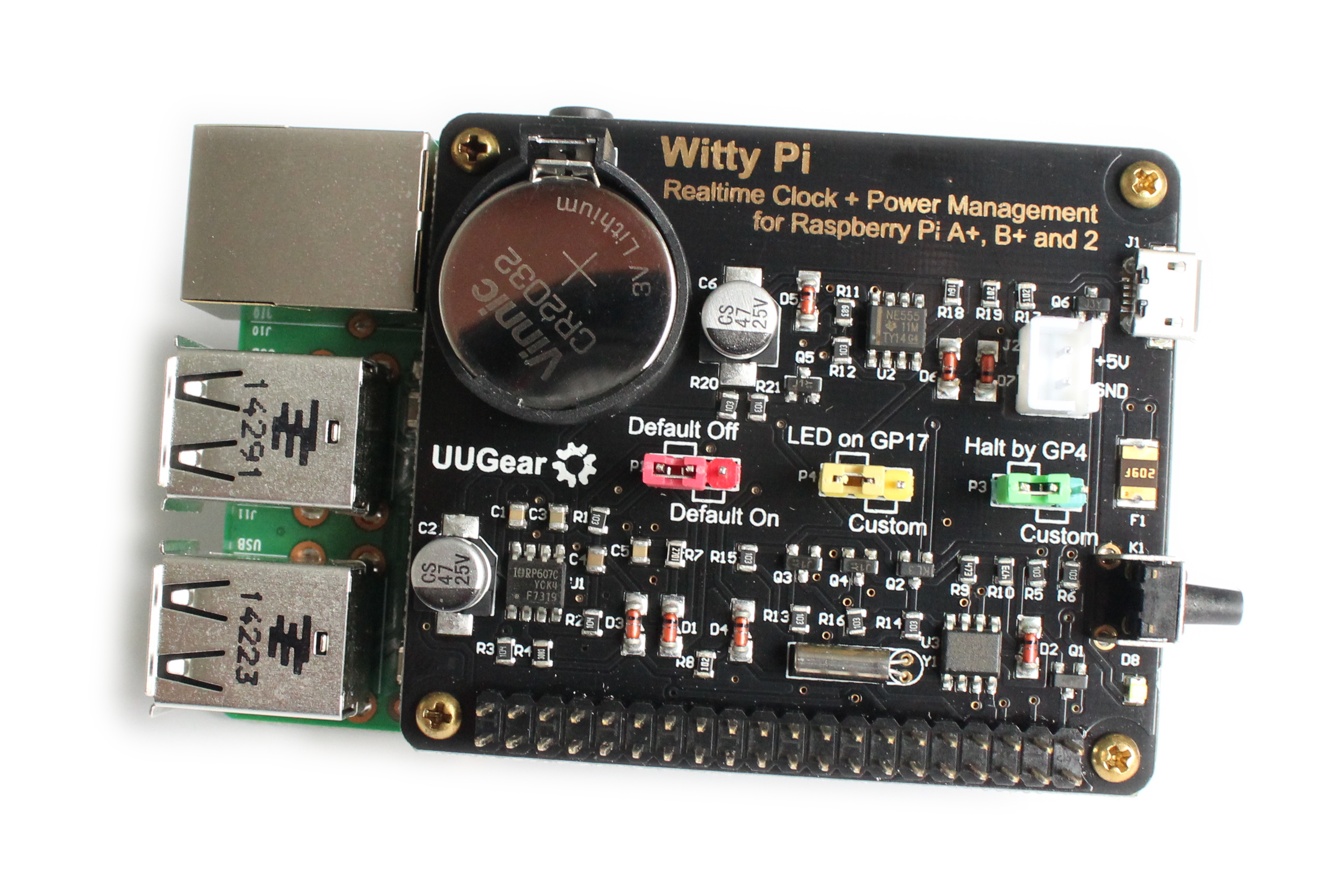Raspberry Pi Remote Control With RemoteIoT Platform
Do you ever wish you could check on your little Raspberry Pi computers without actually being right there with them? Maybe you have a few set up in different spots, or perhaps you just want to see what's happening on one that is tucked away in a corner. It can be a real bother to go physically connect to each one, especially if they are far away.
You might be running a small home project, perhaps a weather station or a smart garden, and then you realize you need to change something or just peek at the data. It's not always easy to get to the device, particularly if it is out of reach or in a spot that is just a bit awkward. This sort of situation can make managing your tiny computers feel like a bigger chore than it should be, you know, just a little bit. Keeping everything running smoothly from a distance seems like a nice idea, doesn't it?
This is where a clever solution steps in, making it much simpler to handle your Raspberry Pi devices from anywhere you happen to be. We are talking about a way to keep an eye on them, make changes, and even fix little hiccups, all without needing to be in the same room. It is, in a way, about making your life with these small machines a whole lot easier, so you can focus on what you want them to do.
Table of Contents
- Bringing Your Raspberry Pi Under Remote Control
- What Makes RemoteIoT a Good Pick for Raspberry Pi Management?
- Setting Up Your Raspberry Pi for Remote Access
- How Can You Keep Tabs on Your Raspberry Pi from Far Away?
- Keeping Your Raspberry Pi Updated and Safe
- What If Things Go Wrong- Remote Troubleshooting Your Raspberry Pi?
- Putting Remote Raspberry Pi Management to Work
- Is RemoteIoT Management Right for Your Raspberry Pi Projects?
Bringing Your Raspberry Pi Under Remote Control
Having a small computer like a Raspberry Pi can be quite handy for many different tasks, from automating parts of your home to running tiny servers. But as you add more of these little machines, or place them in spots that are not so easy to reach, it can get tricky to keep them all working just right. You might find yourself needing to plug in a screen and keyboard every time you want to do something, which, as a matter of fact, takes up a lot of your precious time. This is where the idea of managing them from afar really starts to shine.
Think about it, you could be at your desk, or even on the go, and still be able to peek into what your Raspberry Pi is doing. You could start a program, check on its health, or simply make sure everything is running as it should. This kind of hands-off approach makes working with these small computers much more pleasant, allowing you to get more out of them without the constant physical interaction. It is almost like having an extra set of hands, but those hands are digital and can reach anywhere with an internet connection.
The Convenience of Remote Raspberry Pi Management
The biggest plus point for managing your Raspberry Pi from a distance is, frankly, the sheer ease it brings. No more running around to different locations just to check on a device or make a quick change. If you have a Pi doing something important, say, collecting data from a sensor in your garden, you can just log in from your computer or phone and see what is going on. This saves you a lot of effort and makes it so much simpler to keep your projects ticking along, even when you are not physically present. It is pretty much about giving you back your time, which is something we all could use a little more of, right?
- Jared Mccain Nickname
- Watch Theres Something Wrong With Aunt Diane
- Has Celine Dion Passed Away
- Michael C Hall Spouse
- Checkpoint Bots Destiny 2
Consider a situation where you have several Raspberry Pi units spread across a building, perhaps monitoring different environmental conditions. Without remote capabilities, you would need to visit each one, connect a display, and then type in commands. With remote access, however, you can sit comfortably and manage them all from one spot. This makes the whole process of Raspberry Pi management far less of a hassle and far more efficient, allowing you to focus on the results your devices are producing rather than the mechanics of getting to them. It is truly a game-changer for anyone with multiple Pis.
What Makes RemoteIoT a Good Pick for Raspberry Pi Management?
When you are looking for a way to manage your Raspberry Pi devices from a distance, you want something that is not only straightforward to use but also reliable. There are quite a few options out there, but not all of them offer the same level of ease or features. RemoteIoT, in particular, has some qualities that make it stand out as a helpful choice for anyone working with these small computers. It is, in some respects, built with the everyday user in mind, making what could be a tricky task feel much more approachable.
One of the things that makes RemoteIoT a good fit is how it handles the connection between your computer and your Raspberry Pi. It takes care of a lot of the fiddly bits that usually come with setting up remote access, like dealing with network settings or firewalls. This means you do not have to be a networking expert to get your devices online and ready for remote control. It is designed to be pretty intuitive, which is always a bonus when you are trying to get a project up and running without too much fuss, you know?
RemoteIoT Platform- How It Helps Manage Your Devices
The RemoteIoT platform acts like a central hub where all your Raspberry Pi devices can connect and be seen. Once your Pi is set up with the platform, it sends information back to this hub, giving you a clear picture of its status. You can see if it is online, how much of its resources it is using, and even get alerts if something seems off. This kind of overview is very useful, especially if you have several devices to keep an eye on, so you are always in the loop about what is happening with your Raspberry Pi management setup.
Beyond just seeing what is going on, the platform also lets you send commands to your Raspberry Pi. This could be anything from restarting a program to updating its software. It is almost like having a direct line to your device, no matter where it is located. This ability to interact with your devices remotely is a significant advantage, as it means you can react quickly to any situation or make changes as needed, all from a single, easy-to-use interface. It is really about giving you a lot of control without making things overly complicated.
Setting Up Your Raspberry Pi for Remote Access
Getting your Raspberry Pi ready to be managed from afar might sound like a big job, but with the right tools, it is actually quite straightforward. The first step usually involves making sure your Pi has an operating system installed and is connected to the internet. From there, you will need to add a small piece of software that allows it to talk to the remote management platform. This little bit of code is what creates the link, letting your Pi communicate securely with the outside world, you know, in a good way.
The process often involves just a few simple commands that you type into your Raspberry Pi. These commands tell the Pi to download and install the necessary software, and then to connect to your RemoteIoT account. It is usually a pretty quick process, and once it is done, your Pi will appear on your remote management dashboard. This means you can then start interacting with it without needing to be physically present, which is really the whole point of this kind of setup. It is quite satisfying to see your device pop up online, ready for remote interaction.
Getting Started with RemoteIoT for Raspberry Pi Management
To begin with RemoteIoT for your Raspberry Pi management, you will first need to create an account on their platform. This is typically a quick sign-up process, and once you are in, you will get instructions on how to link your devices. The platform usually provides a specific script or a few lines of code that you run on your Raspberry Pi. This script does all the heavy lifting, setting up the connection and registering your device with your account. It is fairly simple, actually, and designed to get you up and running without much fuss.
After running the setup script on your Raspberry Pi, you should see your device appear on your RemoteIoT dashboard. From there, you can give it a name, organize it into groups if you have many, and start exploring the features available for remote control. This initial setup is arguably the most important part, as it lays the groundwork for all your future remote interactions. It is a good idea to double-check that your Pi has a stable internet connection before you start, as that is pretty much key to the whole operation, you know?
How Can You Keep Tabs on Your Raspberry Pi from Far Away?
Once your Raspberry Pi is connected to a remote management platform, one of the most useful things you can do is keep a close eye on its activity without being next to it. This means being able to see if it is running smoothly, if it is getting too warm, or if it is running out of storage space. Knowing these things helps you prevent problems before they even start, which is really quite helpful. It is like having a little guardian angel watching over your tiny computer, making sure everything is just right.
Many platforms offer a dashboard that shows you all the important details about your connected devices at a glance. You can typically see things like how much of the processor is being used, how much memory is free, and the network activity. This kind of information is very valuable for troubleshooting or just making sure your Pi is performing as expected. It is a bit like looking at the gauges on a car's dashboard, giving you a quick summary of its health and performance, so you are always informed.
Monitoring Your Raspberry Pi with RemoteIoT Management Tools
RemoteIoT provides a set of tools specifically for monitoring your Raspberry Pi, giving you a clear picture of its operational status. You can typically view real-time data on things like CPU usage, temperature, and memory consumption. This information is presented in an easy-to-read format, sometimes with graphs, making it simple to spot any unusual patterns or potential issues. This constant oversight is, in a way, like having a doctor for your device, ready to tell you if something needs attention.
Beyond just showing you numbers, the platform can often be set up to send you alerts if certain conditions are met. For example, if your Raspberry Pi's temperature goes above a certain level, you could get a notification. This proactive approach to Raspberry Pi management means you do not have to constantly check the dashboard; the system tells you when something needs your attention. It really helps you stay on top of things without feeling overwhelmed, which is pretty much what you want from a management tool.
Keeping Your Raspberry Pi Updated and Safe
Keeping your Raspberry Pi's software up to date is a really important part of making sure it runs well and stays secure. Old software can have weaknesses that bad actors might try to use, and it might not work as efficiently as newer versions. But updating a Pi that is not easily accessible can be a bit of a chore. You would usually have to connect to it directly, type in commands, and wait for the process to finish. This is where remote capabilities truly shine, making updates much simpler.
With a remote management platform, you can often push out updates to your Raspberry Pi with just a few clicks. This means you can keep your devices protected from new threats and ensure they have the latest features, all without leaving your desk. It is a straightforward way to maintain the health and security of your devices, making sure they are always running the best possible software. This sort of ability is really quite helpful for anyone with multiple Pis or devices in hard-to-reach places.
Remote Updates and Security for Raspberry Pi Management
RemoteIoT allows you to handle updates and security for your Raspberry Pi devices from a central location. You can typically schedule updates to happen at convenient times, or push them out immediately if there is an urgent security patch. This helps ensure that all your devices are running the most current software, which is a big part of keeping them safe from online dangers. It is, in some respects, like having a dedicated IT person for your tiny computers, making sure they are always protected.
Beyond just software updates, a good remote management platform for Raspberry Pi management can also help you keep an eye on other security aspects. This might include monitoring network connections for anything suspicious or checking for unauthorized access attempts. Having these features means you can maintain a strong security posture for all your Raspberry Pi projects, even when you are not physically present to supervise them. It gives you a good bit of peace of mind, knowing your devices are more or less safe and sound.
What If Things Go Wrong- Remote Troubleshooting Your Raspberry Pi?
Even with the best planning, sometimes things just do not go as expected with electronic devices. Your Raspberry Pi might freeze up, a program might crash, or it might just stop responding. When this happens, and your Pi is not right in front of you, it can feel a bit helpless. You might wonder how you are going to fix it without making a trip to wherever it is located. This is where the ability to troubleshoot from afar becomes incredibly valuable, saving you a lot of potential headaches.
A good remote management system lets you perform many of the same diagnostic steps you would do if you were physically connected to your Pi. You might be able to restart services, check log files for error messages, or even reboot the entire device. This means you can often resolve issues quickly and efficiently, getting your Raspberry Pi back to working order without needing to physically intervene. It is, in a way, like having a remote control for fixing problems, which is pretty convenient when you think about it.
Handling Issues with RemoteIoT Raspberry Pi Management
RemoteIoT provides features that make handling issues with your Raspberry Pi much simpler, even when you are not there. If a device stops responding, you can often send a command to reboot it, which fixes many common glitches. You can also typically access the device's command line interface, which lets you run diagnostic commands or restart specific programs that might have stopped working. This kind of direct access is incredibly useful for effective Raspberry Pi management, allowing you to get to the root of a problem.
Moreover, the platform might give you access to logs and performance data that can help you figure out what went wrong. By reviewing these records, you can often pinpoint the cause of an issue, whether it is a software bug, a resource shortage, or something else entirely. This ability to investigate problems from a distance means you can often solve them without having to travel to the device's location, saving you time and effort. It is really about giving you the tools to be a detective for your devices, so you can solve mysteries quickly.
Putting Remote Raspberry Pi Management to Work
The practical applications of managing your Raspberry Pi remotely are quite broad and can make a real difference in how you use these small computers. Think about smart home setups where Pis control lights, thermostats, or security cameras. If you are away from home and something needs adjusting, or if a device goes offline, being able to fix it from your phone is incredibly useful. It means your smart home stays smart, even when you are

How to Shut Down a Raspberry Pi Remotely

Mastering The Management Of Raspberry Pi Remotely With RemoteIoT

Mastering The Management Of Raspberry Pi Remotely With RemoteIoT